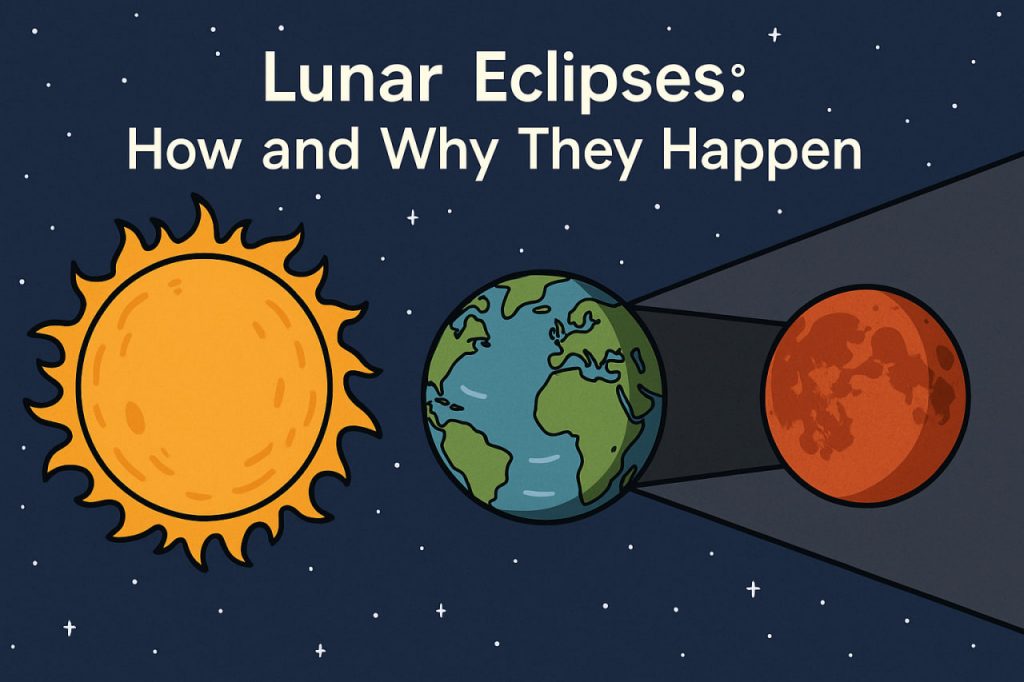A lunar eclipse is one of the most awe-inspiring celestial events visible from Earth. Unlike solar eclipses, which can only be seen from limited areas, lunar eclipses can be viewed by anyone on the night side of Earth when they occur. But what exactly causes a lunar eclipse, and why does the Moon sometimes appear red?
What Is a Lunar Eclipse?
A lunar eclipse happens when the Earth comes directly between the Sun and the Moon, blocking sunlight from reaching the Moon. During this time, Earth casts its shadow onto the Moon’s surface. This only occurs during a full moon, when the Sun, Earth, and Moon are aligned in a straight line.
There are three main types of lunar eclipses:
- Total lunar eclipse – The entire Moon passes through Earth’s darkest shadow (the umbra), often turning red.
- Partial lunar eclipse – Only part of the Moon enters the umbra, creating a visible dark “bite” on the Moon’s surface.
- Penumbral lunar eclipse – The Moon passes through the lighter outer part of Earth’s shadow (the penumbra), causing a subtle shading.
Why Does the Moon Turn Red?
During a total lunar eclipse, even though the Moon is completely in Earth’s shadow, some sunlight still reaches it—but only after passing through Earth’s atmosphere. Our atmosphere scatters blue light and lets red and orange light pass through, bending it toward the Moon.
This effect is the same reason sunsets and sunrises appear reddish. As a result, the Moon takes on a reddish or copper glow, often called a “blood moon.”
How Often Do Lunar Eclipses Occur?
Lunar eclipses happen at least twice a year, though not all of them are total. Whether you can see an eclipse depends on your location and whether the eclipse occurs during your night.
Each eclipse can last several hours, with totality (when the Moon is completely in shadow) lasting up to 1 hour and 40 minutes.
Where and When to See One
Unlike solar eclipses, lunar eclipses are safe to watch with the naked eye. You don’t need special glasses or equipment. However, binoculars or a telescope can enhance the view of the Moon’s surface during the event.
To catch one:
- Check astronomical calendars for the next scheduled eclipse
- Look for clear skies and minimal light pollution
- Head outside during the night when the Moon is above the horizon
Cultural Significance of Lunar Eclipses
Throughout history, lunar eclipses have been seen as omens or messages from the heavens. Ancient civilizations recorded them in calendars and mythology. Today, they remain popular with astronomers, photographers, and skywatchers around the world.
Glossary
- Umbra – The darkest part of Earth’s shadow, where all sunlight is blocked.
- Penumbra – The lighter part of the shadow where some sunlight still reaches.
- Blood Moon – A reddish appearance of the Moon during a total eclipse.
- Scattering – A process where particles in the atmosphere redirect light, affecting its color.
- Totality – The phase of an eclipse when the Moon is completely in shadow.


